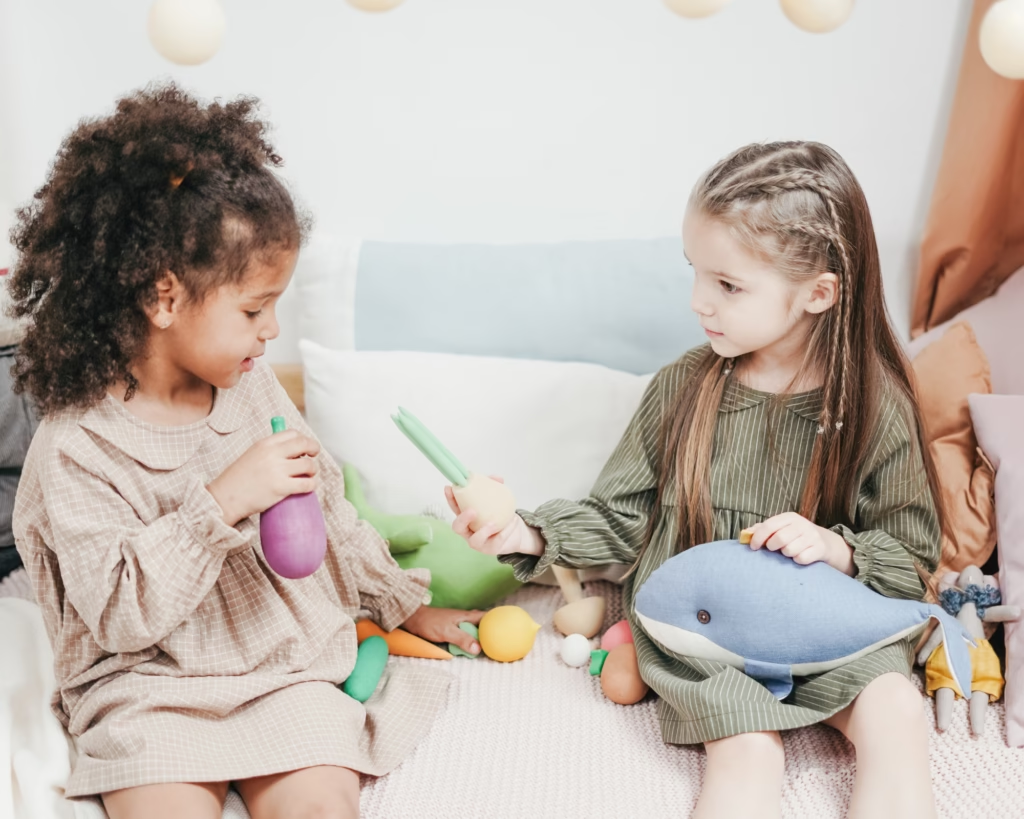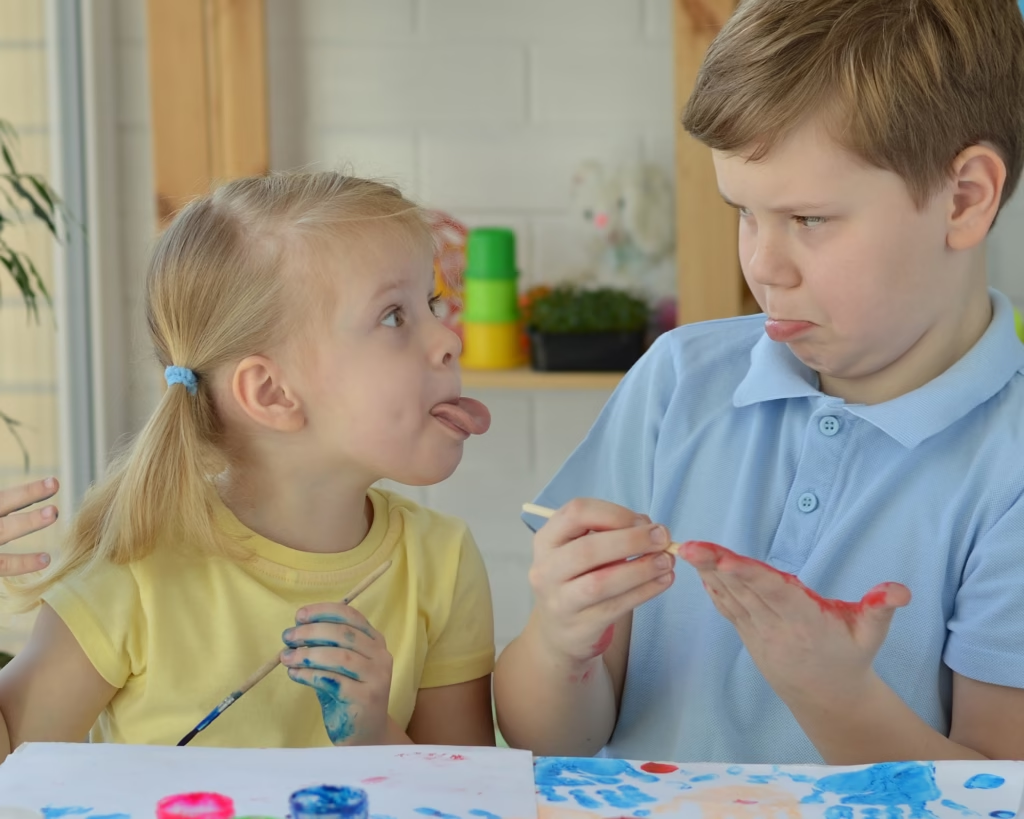Understanding Sibling Dynamics: The Foundation of Relationships
Sibling relationships are often characterized by a unique blend of companionship, rivalry, and deep-seated emotional connections. These dynamics are influenced by various factors, including family environment, parenting styles, and individual personalities. Initially, the way parents foster positive sibling relationships plays a critical role in shaping how siblings interact with each other. For instance, a nurturing and supportive home environment generally encourages children to bond and cooperate, while a competitive atmosphere may breed conflict and tension.
Parenting styles significantly impact sibling interactions. Authoritative parenting, which emphasizes respect, communication, and guidance, tends to cultivate strong interpersonal connections among siblings. In contrast, overly permissive or authoritarian approaches can lead to misunderstandings and conflict. In such scenarios, it becomes imperative for parents to seek sibling relationship advice to navigate these challenges effectively, focusing on tips for sibling harmony to instill cooperation and empathy among the children.

Additionally, individual personalities contribute to how siblings relate to one another. For example, a naturally empathetic child may find it easier to forge a positive relationship with their more independent or assertive sibling. This variance in personalities necessitates strategies for conflict resolution between siblings, enabling each child to appreciate the other’s perspective and ultimately strengthening sibling connections.
Understanding these foundational dynamics can also enhance a child’s personal development. Positive sibling relationships facilitate emotional growth and are crucial for developing social skills, such as communication and conflict resolution. By fostering sibling empathy and understanding, parents can create lasting sibling bonds that not only enrich their children’s childhood experiences but also support their emotional well-being throughout life. Through deliberate effort, raising siblings with love and respect can lead to a harmonious family environment, promoting healthy family dynamics and sibling relationships.
“The living room is a battlefield. Toys are scattered like landmines, and the air crackles with tension. In homes across the globe, parents stand on the frontlines of the oldest conflict in human history: sibling rivalry.
As global tensions rise and social media amplifies divisions, our children are absorbing these patterns. But what if the key to a more harmonious world begins right in our homes?
Imagine a revolution of kindness, sparked by the very siblings who once waged war over the last cookie. Picture a generation of adults who negotiate conflicts with the grace and skill they learned from resolving childhood squabbles.
Effective Communication Strategies for Siblings
Effective communication is fundamental to nurturing positive sibling relationships and fostering a harmonious family environment. To strengthen sibling connections, strategies that promote active listening and allow each child to express their feelings and needs openly must be employed. One vital technique is encouraging siblings to practice active listening, which involves giving full attention to the speaker without interruptions. This approach helps children feel valued and enhances their understanding of each other’s emotions, paving the way for empathy and improved communication.

In addition to active listening, teaching siblings how to articulate their feelings is crucial. Parents can guide their children in using “I” statements to express what they feel without blaming the other sibling. For instance, instead of saying, “You never share your toys,” the affected child might say, “I feel upset when we don’t share our toys.” This method minimizes conflict and facilitates healthy discussions, underpinning the principles of conflict resolution between siblings.
- Make at least 12 bracelets for your closest friends
- Comes with 10 skeins of embroidery floss, beads, plastic Klutz clip
- Includes a 58 page instructional book with Klutz certified crystal-clear instructions
Conflict is a natural aspect of sibling relationships, but it does not have to escalate. Parents can introduce role-playing scenarios where siblings practice resolving disagreements amicably. Through simulated situations, children learn to negotiate solutions and understand the importance of cooperation. This approach not only teaches them how to improve sibling bonding but also emphasizes the value of teamwork, ultimately leading to lasting ties.
Furthermore, creating opportunities for siblings to collaborate on shared tasks or projects can significantly enhance their communication. Engaging in family activities that require teamwork encourages children to work together, strengthening their emotional bonds. Lastly, parents need to model positive communication in their interactions, as children often imitate behavior observed at home. By fostering these communication strategies, families can create lasting sibling bonds founded on respect, understanding, and love.
Cultivating Shared Experiences: Building Bonds Through Activities
Shared experiences play a crucial role in forming positive sibling relationships. Engaging in activities together fosters bonding and helps siblings learn valuable skills such as teamwork and cooperation. Various activities can be tailored to not only suit different age groups but also align with the unique personalities of each child. By investing time in shared pursuits, families can create lasting memories and cultivate a supportive environment conducive to sibling harmony.
- EXPLORE CATAN: Set sail to the uncharted island of Catan and compete with other settlers to establish supremacy.
- RESOURCE MANAGEMENT: Strategically gather and trade resources like ore, brick, lumber, grain, and wool to expand your se…
- BUILD AND UPGRADE: Use your resources to build roads, settlements, and cities to earn victory points.
- THE ORIGINAL WOOD BLOCK GAME: Dare to risk it? Pull out a block, place it on top, but don’t let the tower fall! The Jeng…
- FAST, EXCITING, ANYTIME FUN: With a simple set up, easy-to-learn rules, and just the right amount of challenge, the Jeng…
- GREAT KIDS PARTY GAMES: Suspense, surprises, laughs! Liven up a party by taking along this portable game. This wooden bl…
- Classic Twister gameplay
- Larger mat with more spots
- The last player standing wins
One effective way to enhance sibling connections is through family games. Board games, card games, and interactive video games can all serve as platforms for siblings to engage in friendly competition or collaborative play. Such activities encourage healthy interaction and teach conflict resolution between siblings, providing essential sibling relationship advice for parents on promoting cooperation among siblings. Additionally, creative projects, such as art or DIY crafts, can stimulate collaborative creativity, allowing siblings to express themselves while learning to appreciate each other’s contributions.

Outdoor adventures offer another excellent avenue for building healthy sibling relationships. Activities like hiking, biking, or participating in sports not only promote physical well-being but also strengthen emotional bonds through shared experiences. These outings can serve as opportunities for siblings to support each other, further enhancing sibling support and emotional well-being. Parents can also encourage sibling involvement by organizing volunteer work, instilling a sense of responsibility and teamwork while giving back to the community.
In summary, cultivating shared experiences through a variety of engaging activities is essential for building lasting sibling bonds. Whether it’s family games, creative projects, or outdoor adventures, these opportunities not only promote fun but also foster the empathy and understanding required to encourage positive sibling relationships. By actively participating in these shared moments, parents can guide their children in enhancing sibling connections and teaching kids to get along with siblings. This will ultimately lay the foundation for a nurturing family dynamic throughout their lives.
Navigating Challenges: Addressing Rivalry and Conflict
Sibling relationships are often characterized by a dynamic interplay of love and rivalry. While bonding with siblings is an essential aspect of family life, conflicts can arise from competition, jealousy, and differing personalities. Understanding the root causes of these challenges is pivotal for fostering positive sibling relationships. Issues such as perceived favoritism or lack of individual attention can exacerbate feelings of rivalry. Recognizing these triggers provides parents with insight into how to improve sibling bonding.

To address these conflicts constructively, it is necessary to teach conflict resolution skills from a young age. Encourage siblings to articulate their feelings and perspectives, cultivating empathy and understanding. Simple practices, such as allowing each child to express their views during disagreements, can promote sibling cooperation and teach important life skills. This proactive approach helps in mitigating conflicts before they escalate, enhancing family dynamics and sibling relationships.
- Size and type: You can choose the beautiful mug to give to friends, relatives or gift for yourself. We sell different ty…
- High quality printed on both sides: High quality ceramic. Treat yourself or give as a gift to someone special. This is t…
- Safe and effective: Cheap product but premium quality for your lovers. Safe for microwave and dishwasher. Comfortable C-…
Setting clear boundaries is another significant aspect of managing sibling rivalry. Establishing rules around acceptable behavior during disagreements can foster an environment of respect and accountability. Parents may find it beneficial to involve their children in creating these guidelines, encouraging ownership and responsibility in maintaining sibling harmony. Sharing anecdotes of families who have successfully navigated sibling tensions can serve as valuable examples for others facing similar challenges. For instance, some parents have found that holding regular family meetings allows siblings to voice their issues and collectively problem-solve, thus reinforcing their emotional support for one another.
In fostering an atmosphere characterized by love and respect, parents can significantly influence their children’s ability to build healthy sibling relationships. By emphasizing the importance of communication and empathy, families can turn rivalries into opportunities for growth and deeper connection. Ultimately, teaching kids to get along with siblings is an ongoing journey that requires patience, understanding, and commitment.















